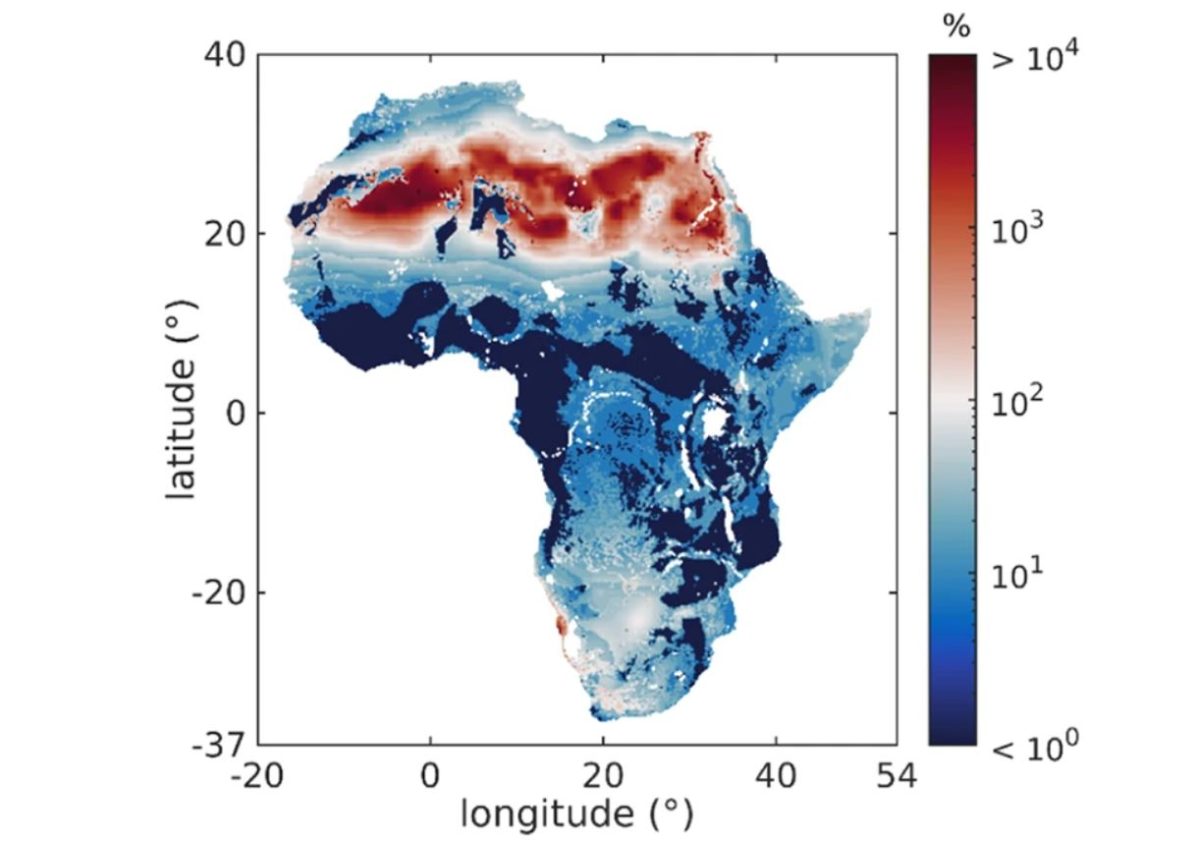Scientists from research institutes and universities in France, the United Kingdom, and the United States have designed a numerical model that uses openly available data to simulate the potential capacity of PV water pumping systems (PVWPS) across Africa.
The new model reportedly improves on previous research by including sub-hourly data, rather than monthly average, irradiance figures, and realistic geological constraints on the depth of pumping.
“Considering sub-hourly irradiance time series enables simulations for critical days of the year (notably very low irradiance days) for which the pumped volume may be very low, which can impact smooth water consumption,” the researchers said.
The model produces results for the entire African continent, including North Africa and locations where groundwater is deeper than 50 meters and therefore more appropriate for PVWPS than hand pumps.
The researchers looked at how much groundwater can be pumped by optimally tilted PV systems of 100 W, 1,000 W, and 3,000 W in size, where 1,000 W is the average size of a PVWPS for domestic water access, and 3,000 W for irrigation. The inputted sub-daily irradiance data was for the year 2020.
The results show that the best potential for a 1,000 W PVWPS system is in Central Africa, with an average daily pumped volume of 100 cubic meters.
Popular content
“Results indicate that the pumped volume values vary importantly from one area to another,” the academics said. “These values have to be compared to the water requirements for domestic use and irrigation.”
The daily water requirement for basic access to domestic water is around 15 liters per person per day, whereas community agriculture requires 10 cubic meters to 100 cubic meters per day. Commercial irrigation often needs more than 200 cubic meters per day.
The larger 3,000 W system notably does not yield higher pumped water volumes in 27% of the locations. This is due to a phenomenon known as “groundwater drawdown,” when the groundwater level drops due to intensive water pumping, reaching the level of the motor pump and thus forcing the system to stop. For example, in the Ivory Coast, the average daily pumped volume for a 1,000 PVWPS system is 15.9 cubic meters and only 5.2 cubic meters for a 3,000 W system.
The results “may help target investments in large-scale PV water pumping programs and identify areas where pumping potential is low and will need additional investigation to de-risk investment,” the academics concluded. They shared their findings in “Aquifer conditions, not irradiance determine the potential of photovoltaic energy for groundwater pumping across Africa,” which was recently published in Nature Communications Earth & Environment.
This content is protected by copyright and may not be reused. If you want to cooperate with us and would like to reuse some of our content, please contact: editors@pv-magazine.com.


1 comment
By submitting this form you agree to pv magazine using your data for the purposes of publishing your comment.
Your personal data will only be disclosed or otherwise transmitted to third parties for the purposes of spam filtering or if this is necessary for technical maintenance of the website. Any other transfer to third parties will not take place unless this is justified on the basis of applicable data protection regulations or if pv magazine is legally obliged to do so.
You may revoke this consent at any time with effect for the future, in which case your personal data will be deleted immediately. Otherwise, your data will be deleted if pv magazine has processed your request or the purpose of data storage is fulfilled.
Further information on data privacy can be found in our Data Protection Policy.